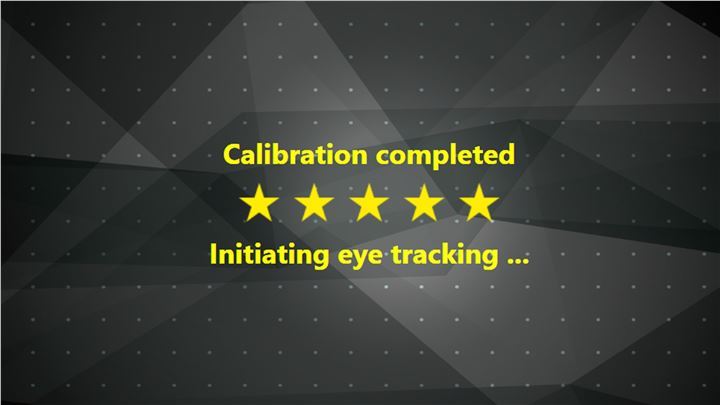CoolTool Blog

The Ultimate Guide on How to Analyze Eye Tracking Data
Running eye tracking tests have become easy and lovely like a walk in the park. It’s not a joke.
Wireless eye-trackers and accessible software make it very easy for any researcher or marketer to get in-depth insights into consumers’ behavior on a website (including mobile sites), during the watching commercials (that is crucial for understanding advertising effectiveness), at the moment of observing shelves with products (to get to know what package was the most attractive).
And only one thing - the accuracy of eye tracking insights still can be questionable, since many researchers don’t take into account a number of peculiarities of the eye-tracking process which compromises the quality of final data.
In order to address this issue, we referred to the knowledge of Tim Holmes, one of the best neuroscientists. Check out the tips on how to conduct proper eye-tracking tests and to achieve ultimate data accuracy.
At first…
What is eye tracking?
Eye tracking is a technology that allows you to observe viewing patterns and understand what a person is looking at. It is a quick and easy way to analyze how your target audience reacts to the marketing tools you employ for communication. You are literally able to intercept a persons’ gaze before they could control their gaze movement or fixation point.
At CoolTool, you can run eye tracking studies online via a standard webcam reaching your consumers worldwide or using eye tracker during the testing respondents in the lab (may be useful 10 Points Checklist for Setting Up an Eye Tracker).
Eye tracking provides 10+ basic metrics including easy-to-read visualizations (heatmaps, gaze plots, opacity maps) and comprehensive statistics (fixation count, fixation duration, fixations before). Find out more details about the most used eye tracking metrics in our previous blog post Eye Tracking Metrics: What are They and What They Say.
Always pilot before going full-scale
Even the most meticulously planned neuromarketing research, regardless of how perfect it looks on paper, can drastically fail in real-life conditions.
Before launching full-scale research, gather several participants and walk through the test logic with them. Test both the logic framework of the test and applied equipment.
Do it slowly, step-by-step, and take into account participants’ feedback. It’s better to polish all those small inconsistencies and mismatches at the early stage of the research than to deal with the consequences of large volumes of inaccurate data collection.
Eye tracking calibration may seem boring but it's too important to ignore
It’s worth calibrating your eye-tracking equipment correctly in order to ensure the proper mapping of gaze.

When testing a particular object on screen it’s always worth remembering that regardless of how strong we encourage participants to look in “the right direction” their gaze will stroll far beyond the object of testing. That’s why, it’s very important to take into account the screen resolution and size, especially when you compare your object of testing with those of competitors.
Don’t be limited by heatmaps
Heatmaps look great and are an easy-to-use tool to analyze gaze patterns. Heatmaps are so popular because they present the information in the form of easy visualizations which clearly show where users looked and which areas of interest attracted their attention the most. We really like to observe "live heatmaps" in video format!
By the way, check other videos on our YouTube channel or get the full case study on how this neuromarketing research was done and how we analyzed collected data.
While it’s a really handy tool, the information which it presents maybe sometimes insufficient or even misleading. It’s always better to support heatmaps with analysis of such parameters as fixation duration, gaze plots, and other eye-tracking metrics.
Comprehensive analysis of metrics helps to identify research outliers that can’t be clearly registered by heat-maps but which nevertheless influence the quality and content of obtained data.
Omit the so-called 'central fixation bias'
Central fixation bias is a tendency of research participants to look at the center of the image.
This bias is quite widespread and in the majority of cases manifests itself during the first moments after the appearance of the tested object on the screen. It means that during the analysis of heat of opacity maps you will see that the central area of the image attracted the most attention within the first seconds after the demonstration of the stimuli.
This information can be misleading, especially if the tested object is inside of this area. In order not to be fooled by the central fixation bias, it’s recommended to analyze fixations of gaze which occur 1-2 seconds after the initial demonstration of the tested image. Also, in order to mitigate the influence of this bias, it’s better to place the tested object outside of the center of the screen.
Clearly define areas of interest
Area of interest (AOI) is a spot on the tested image that you can point out in order to get detailed information on users’ interaction with it.

Very often researchers, especially commercial ones, want to get as much information as possible from the test because they are obsessed with value-for-money indicators. As a result, they cover the entire web page or tested object with AOIs which isn’t a good idea, because every eye-tracker, even the most precise one, has a margin of error.
As a rule, it falls in the range between 0,5-1 degrees for high-quality eye trackers which means that the accuracy of gaze catching will be compromised by 0,5-1 cm from approximately 60 cm viewing distance.
We hope these practical tips will help you improve the quality of eye tracking data you collect.
Newby to eye-tracking tests and neuromarketing research at all? Will be happy to help you understand how it works better during the demo sessions. See you there.
Read also
40+ Weird and Confusing Neuro-research Terms With Their Definitions
12 Guaranteed Answers Eye Tracking Gives For Your Research
6 Ways Eye Tracking Can Improve Your Website Usability
Cover: Viktoria Karnauhova
